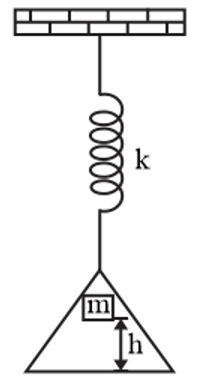Q.
A load of mass $m$ falls from a height $h$ on to the scale pan hung from a spring, as shown in the figure. If the spring constant is $k$ , mass of the scale pan is zero and the mass $m$ does not bounce, relative to the pan, then the amplitude of vibration is

NTA AbhyasNTA Abhyas 2020Oscillations
Solution: